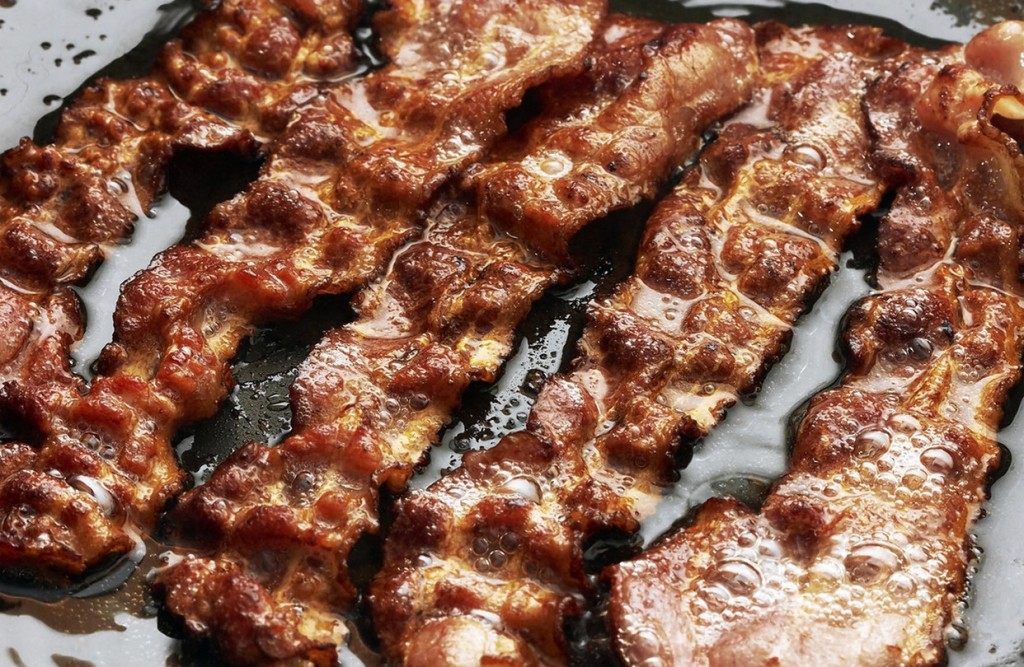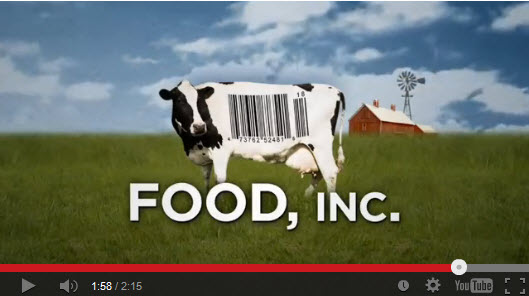Consumers from Beijing to Boston are gobbling up more meat and dairy products, fueling multibillion-dollar mergers in the food industry and reshaping global agriculture.
This intensifying appetite for protein is one of the main forces driving Tyson Foods Inc. TSN -0.92% ‘s planned $7.7 billion acquisition of Hillshire Brands Co. HSH +0.25%
Increasingly wealthy consumers in emerging economies are piling more meat on their plates and feeding their children more milk products.
Meat Market
The rising demand for protein has caused ripple effects:
- PORK: Average U.S. retail pork prices reached a record $3.95 a pound in April, up 13% from a year earlier, due to tighter hog supplies.
- GRAIN: Corn prices have tumbled about 30% in the past 12 months thanks to a record U.S. crop last year, lowering costs for livestock producers.
- DAIRY: U.S. dairy exports jumped 19% by volume in 2013 to an all-time high, spurred by demand for milk products in China, Indonesia and other Asian markets
- POULTRY: U.S. chicken exports reached a record $4.25 billion in 2013 as global demand grows for broiler meat, which is typically cheaper than beef and pork
In the U.S., meanwhile, some health-conscious consumers are replacing carbohydrates like bread and cereal with more animal protein, including meat, yogurt and eggs.
The trend has given rise to new meat-industry giants such as Brazil’s JBS SA JBSS3.BR +0.52% and China’s WH Group, and is propelling sales by U.S. companies such as Hillshire, maker of Jimmy Dean sausages and Ball Park hot dogs, and Chobani Inc., the country’s biggest Greek yogurt brand.
It is also prompting farmers around the world to expand their production of meat as well as the corn, soybeans and other crops used to feed livestock.
“The protein business is a very good business to be in right now,” said Chuck Wirtz, who raises about 50,000 pigs a year on a farm near Whittemore, Iowa. “The farming industry benefits from changing diets world-wide.”
Companies are rushing to secure critical assets, from milk powder for infant formula to billion-dollar brands that dominate supermarket meat cases. The Hillshire deal, if completed, would be the meat industry’s biggest merger, topping last year’s $4.7 billion acquisition of Smithfield Foods Inc. by WH Group, then known as Shuanghui International Holdings. That deal ranked as the biggest-ever Chinese takeover of an American company.
JBS of Brazil has made a string of acquisitions over the past decade to transform the company into what its executives say is the world’s biggest meat processor, with sales of $41.7 billion last year. JBS also bid for Hillshire, through its Pilgrim’s Pride Corp. PPC +1.11% unit, but lost to Tyson.
Meat, eggs, dairy products, beans and grains are among the principal sources of protein, which the digestive system breaks down into amino acids that replace existing proteins in human cells. Because the body can’t produce some amino acids on its own, protein is considered an essential part of the human diet.
Protein deficiency remains a problem for millions of people in poorer countries but, as incomes grow, meat typically becomes a bigger part of peoples’ diets.
World-wide meat consumption will rise 1.9% a year over the next decade, according to projections from the U.S. Agriculture Department, as rising incomes in places like China, Mexico and Central America allow consumers to afford more pork, chicken and beef.
The United Nations Food and Agriculture Organization has projected that by 2030 the average person will consume about 99 pounds of meat a year, versus 86 pounds in 2007 and 73 in 1991. The U.S. Agriculture Department predicts that China and Hong Kong will boost beef imports by 55% by 2024.
In response, farmers from the U.S. to Ukraine have planted more corn and soybeans, core ingredients in most livestock feed.
U.S. farmers planted 97 million acres of corn in 2013, the most since the 1930s and up from 75.7 million in 2001. Meanwhile, meat producers in developing countries like Brazil are ramping up output: the U.N. expects such countries to account for about 80% of the growth in global meat production over the next eight years.
The mounting demand for meat and dairy products has raised environmental concerns. The U.N. estimates that livestock production is responsible for about 14% of global greenhouse-gas emissions.
Environmentalists blame animal waste from livestock operations for creating “dead zones” in coastal waters, and argue that meat is a relatively inefficient source of protein, and that it would make more sense to convert land that now produces animal feed to high-protein grains for human consumption.
In the U.S., most people already consume more protein than they need, according to the U.S. Centers for Disease Control and Prevention. Average U.S. consumption of meat, measured by weight, ticked up in 2013, after falling in recent years, according to the Agriculture Department. Sales of fresh meat—the cuts sold shrink-wrapped in the supermarket—have suffered in part because of record beef and pork prices. Those prices reflect the drought and disease that have reduced U.S. livestock supplies. Sales of mass-market milk also have waned.
But sales of many processed meat and dairy products are soaring, as many Americans shift away from carbohydrates and companies come up with new and more-convenient products and packaging that tap into the pro-protein trend.
U.S. sales of packaged foods with protein-related claims on their labels rose to $7.5 billion in the year ended Feb. 15, a gain of more than 50% from the like period four years ago, according to research firm Nielsen.
Companies seeking to cash in on that demand include Kraft Foods KRFT +0.20% Group Inc., which is launching a new Oscar Mayer product called P3 Portable Protein Pack, which includes Kraft cheese, Oscar Mayer meat and Planters nuts. Hormel Foods Corp. HRL +0.44% has developed meat-and-cheese wraps under a brand called Rev that touts its protein content.
The trend has been especially pronounced in breakfast foods, an area of particular strength for Hillshire. Post Holdings Inc., POST +0.45% maker of breakfast cereals such as Fruity Pebbles and Shredded Wheat, agreed in April to pay $2.45 billion to buy Michael Foods Inc., a maker of eggs and dairy goods. Also in April, Chobani, whose business already has grown rapidly, won a $750 million investment from private-equity firm TPG, in part to fund expansion.
“Greek yogurt has just exploded,” said Tyson Chief Executive Donnie Smith, in a recent interview. He said the demand for protein, particularly in foods that are easy to eat on the go, prompted Tyson this year to launch its first line of breakfast sandwiches, called Day Starts, with labels highlighting their protein content.
Western companies also are seeking to profit from the developing world’s growing appetites for protein—with mixed success. Archer Daniels Midland Co. ADM +1.03% ‘s attempted takeover last year of Australian grain merchant GrainCorp Ltd. GNC.AU 0.00% hinged in part on ADM’s ambition to sell more grain to Chinese livestock producers. Australian regulators rejected the deal, saying it went against Australia’s national interest.
Tyson has invested heavily in expanding its chicken processing in China, but has struggled with consumer concerns there about avian influenza, which have damped sales.
In February Montreal-based dairy giant Saputo Inc. SAP.T +1.81% bought Australian peer Warrnambool Cheese & Butter for nearly 450 million Canadian dollars (US$412 million), seeking a platform for sales to Asia, where demand for dairy products is growing rapidly.
The burgeoning Asian market for dairy products to make infant formula and other foods has fueled demand for U.S. milk. About 15% of the milk produced in the U.S. now is sold to foreign countries, versus a minimal amount a decade ago, according to Connie Tipton, chief executive of the International Dairy Foods Association. “We’re sending over cheese on tankers to serve fast-food restaurants” in China, she said.
The Flip Side
Click on this video to see the trailer
For most Americans, the ideal meal is fast, cheap, and tasty. Food, Inc. examines the costs of putting value and convenience over nutrition and environmental impact.
Director Robert Kenner explores the subject from all angles, talking to authors, advocates, farmers, and CEOs, like co-producer Eric Schlosser (Fast Food Nation), Michael Pollan (The Omnivore’s Dilemma), Gary Hirschberg (Stonyfield Farms), and Barbara Kowalcyk, who’s been lobbying for more rigorous standards since E. coli claimed the life of her two-year-old son.
The filmmaker takes his camera into slaughterhouses and factory farms where chickens grow too fast to walk properly, cows eat feed pumped with toxic chemicals, and illegal immigrants risk life and limb to bring these products to market at an affordable cost. If eco-docs tends to preach to the converted, Kenner presents his findings in such an engaging fashion that Food, Inc. may well reach the very viewers who could benefit from it the most: harried workers who don’t have the time or income to read every book and eat non-genetically modified produce every day.
Though he covers some of the same ground as Super Size Me and King Korn, Food Inc. presents a broader picture of the problem, and if Kenner takes an understandably tough stance on particular politicians and corporations, he’s just as quick to praise those who are trying to be responsible – even Wal-Mart, which now carries organic products. That development may have more to do with economics than empathy, but the consumer still benefits, and every little bit counts.

